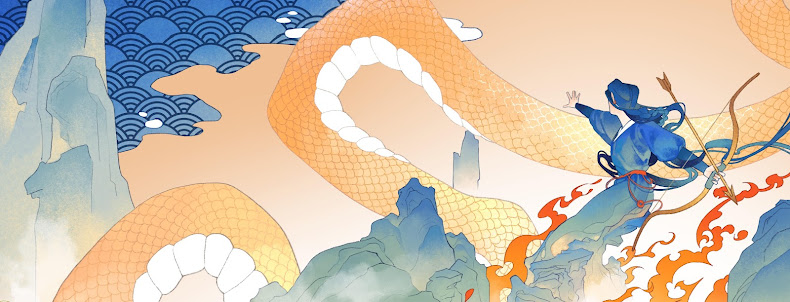I
was quite excited when I found last week on the internet a collection of Liu
Rushi’s paintings. Before this discovery, I was aware that one painting by her,
titled Misty Willows by the Moonlit Dike,
is held at the Palace Museum of Beijing.
Liu
Rushi 柳如是
(1618 – 1664), Chen Yuanyuan 陳圓圓 (1625 – 1681) and Li Xiangjun 李香君 (1624 – 1653) were courtesans with exceptional talents and stunning beauty from the late Ming dynasty. They were the most celebrated among the famous Eight Great Beauties of Qinhuai in Nanjing 秦淮八艷, by virtue of their high-profile romance with prominent literati and their drama-filled lives.
Liu Rushi was a poetry prodigy with artistic flair in calligraphy, painting and embroidery, while Chen Yuanyuan and Li Xiangjun were renowned kunqu opera singers and pipa (4-stringed lute) players. They are the three protagonists of my upcoming novel.
Liu Rushi was a poetry prodigy with artistic flair in calligraphy, painting and embroidery, while Chen Yuanyuan and Li Xiangjun were renowned kunqu opera singers and pipa (4-stringed lute) players. They are the three protagonists of my upcoming novel.
I’ve
recently come to know that some of Liu's paintings are now in the possession of the Freer
Gallery of Art (Smithsonian Institution) in Washington DC. Information on the
museum’s website shows that the collection was purchased at a 1992 Sotheby New
York auction from (presumably the estate of) a Frenchman named Jean-Pierre
Dubosc (1904 – 1988).
Curiosity
drove me to do a little research on Dubosc, and I’ve discovered another
interesting story.
Jean-Pierre
Dubosc was a French diplomat attached to the French Legation in Beijing and an
avid collector of Chinese artefacts. He happened to be married, at one time, to
Janine Loo, the youngest daughter of C. T. Loo (1880 – 1957), who had, since
1908, established himself in Paris as a dealer in Chinese antiques. According
to China Rhyming’s
blog post,
while living in Beijing, Dubosc occupied himself with sourcing Chinese
treasures from antique and curio shops for various European and American
museums, as well as for C. T. Loo’s Paris dealership business.
C.
T. Loo, a mysterious man of humble birth, revered in the West but scorned in
his homeland for stealing its patrimony, was the subject of a 2013 biography by
Geraldine Lenain, an Asian art expert now living in Shanghai, titled Monsieur Loo: Le Roman d’un Marchand d’Art
Asiatique (Mr. Loo: The Novel of an
Asian Art Dealer). She had obtained Loo’s precious personal archives from his
grandson, and permission to write the biography from Janine Loo. The
publication is in French and in Chinese. I’m not sure if there is an English
translation. I digress.
Back
to Liu Rushi’s paintings. It is not known when or how or from whom Dubosc got those
paintings. Nor is it clear why he had not sold the paintings while he was still
alive. Was it because nobody in the West knew who Liu Rushi was, and so there
was no demand for her work? Or was it for some other reason? It is a known fact
that many of the poem and calligraphy collections and paintings by Liu Rushi
and her husband Qian Qianyi were destroyed in the Qianlong Emperor’s cull of
anti-Qing literary work when he championed the creation of the Siku Quanshu (Complete Library of the Four
Treasuries). Dubosc could well be aware that Liu’s paintings were a rare find.
For
many people, especially non-Chinese, the name Liu Rushi is probably not a
familiar one. Yet, despite her low status as a courtesan, she was the subject
of an 800,000-word biography written by the eminent historian and intellectual luminary Chen Yinke 陳寅恪 (1890 – 1969),
who spent the last ten years of his life researching and writing it. The title
of the work is: An Ulterior Biography of
Liu Rushi. More importantly, he famously named her as the embodiment of the
Chinese nation’s spirit of independence and liberal thinking. That comment was what
had goaded me to read, research and write about this multi-talented poet-courtesan.
A
note of interest is that Chen Yinke had been condemned as anti-revolutionary in
his fading years, and it was not until 1988 that his former students and
friends could openly commemorate him. His seminal biography of Liu Rushi and
other works only emerged from oblivion in the 1990s. Hence the auction of Liu’s
paintings in 1992 would appear to be a natural timing.





No comments:
Post a Comment